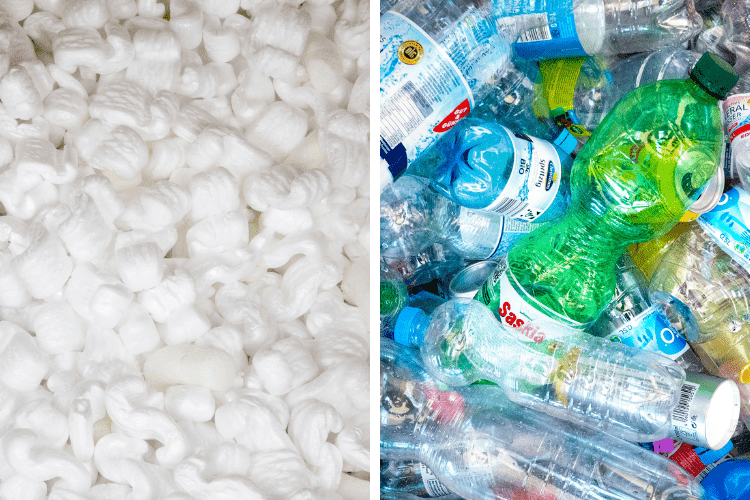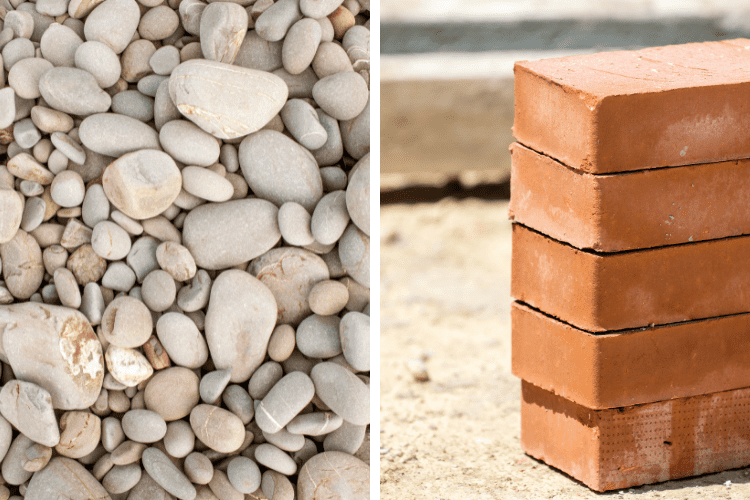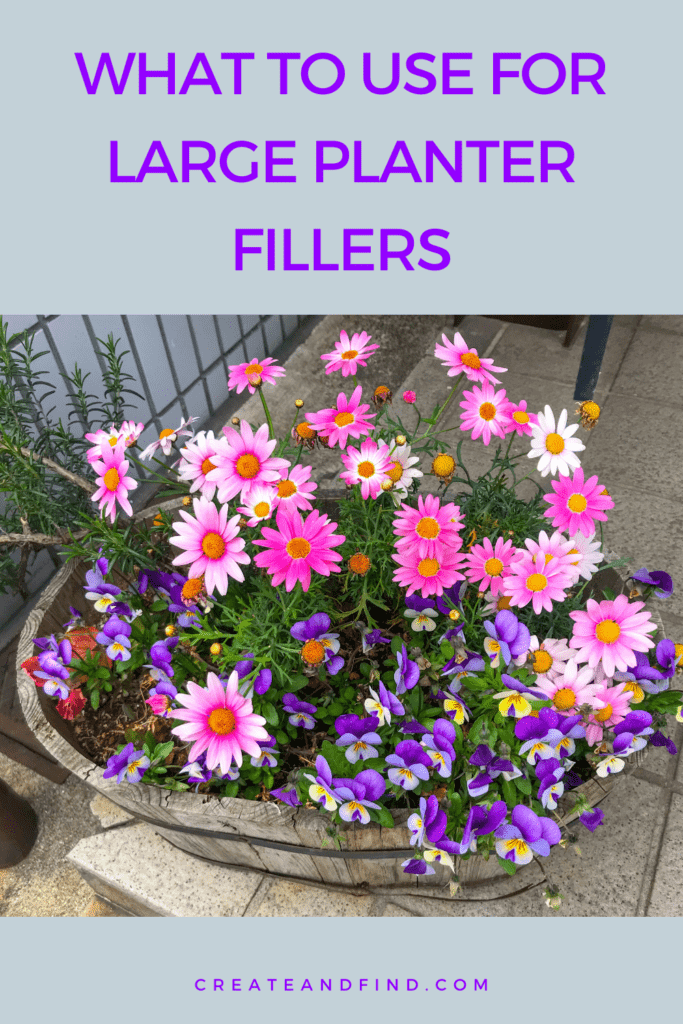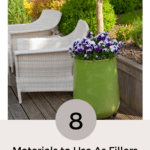Large planters look incredible with trailing flowers and gorgeous colors. But it can be pretty costly to set them up. I’ve got a few ideas for fillers for large planters to get you started without spending a ton of money. There are several budget-friendly ways to fill your planters and you likely have some of the materials around your house.
There are several options when trying to fill your planters with material other than soil. Since good soil can get costly, especially for larger planters, it’s helpful to find other ways to offset the cost. Materials to use for planter fillers include styrofoam peanuts, cans, plastic items such as containers or the trays your plants come in, pebbles, and so much more.
8 Easy Ideas for Fillers for Large Planters
Why Should You Use Planter Fillers?
One of the main reasons you might want to use fillers for your planters is cost – larger planters tend to be more expensive and use more soil. But it also cuts down on the weight of the planters.
If you have a patio on an apartment for example that’s several flights of stairs up, you don’t want to haul heavy bags of soil upstairs. Or if you don’t want your planters to end up being too heavy to move around if needed, the lighter filler materials will come in handy.
In addition, you may need to move these planters inside in certain climates and you want to be able to transport them to a garage or shed.

Lightweight Fillers for Large Planters
Packing Peanuts
The first option that comes to mind and is easily attainable is packing peanuts. They come in a variety of shapes and even have a few biodegradable options.
Not all of these packing peanuts are made from styrofoam. Some are even made of vegetable starch.
Packing peanuts are good for filling planters because they are extremely lightweight, affordable, and readily available. They also allow for adequate drainage.
If you choose this option, it’s a good idea to add a barrier between your peanuts and your soil. Use a layer of landscape fabric or even use pantyhose to wrap them in first. This will ensure that your roots don’t become tangled around them should you want to move or swap your plants.
Broken Pieces of Styrofoam
Another super affordable option that many of us have at our house is basic styrofoam. The kind that you get in packages when you have something delicate shipped.
You can chop up the pieces or break them apart and use those for filling your planters. It gives you an affordable filler, plus keeps the styrofoam out of the landfill.
Plastic Materials
Any kind of plastic material you find around your home will work. Empty sandwich meat containers, plastic water bottles, milk jugs, trays that you buy flowers and plants in, etc. Even plastic sand toys from the dollar store will work and they often have holes in them for built-in drainage.
These are great to use because they don’t pack together tightly to block your drainage. Throw them in your planters in a variety of shapes and sizes.
However, if you are using your planters for food plants, make sure to use a food-grade friendly plastic. Most items today will list if they are BPA-free to ensure you’re using something safe for growing food.
Empty Cans
Another item you probably already have around the house is a stash of empty cans. Soda cans, beer cans, canned food containers, etc.
Give them a good rinse before tossing them into your planters and you’ll have plenty of filler before adding soil to your planters.
Organic Materials
If you prefer to use organic materials for large planter fillers, you often have to look no further than your backyard.
Collect small sticks, leaves, moss, or bark and use these for your planters. Keep in mind that organic materials will break down faster than nonorganic such as plastic or styrofoam so you may need to add more filler or soil periodically.
I generally use my planters for annuals so this isn’t a huge deal when I know I’ll be changing them out next spring or summer anyway.

Heavy Fillers for Large Planters
If you want to make sure your planters have some weight to them, you’ll want to use a heavier plant filler to keep it stabilized. This can be especially helpful in windy areas. Another benefit is most of these won’t compact down and sink your plants.
One downside to heavier plant fillers is they can be more expensive than items you already have at home. But, you don’t replace them every year so it can still save you money in the long run.
Pebbles or Rocks
Pebbles, gravel, or any other type of rock can be used to fill your planters before adding soil. Situate your planter where it’s going to stay before adding them though.
One benefit of using pebbles for fillers is drainage. There will be enough room for water to soak through to avoid having soggy roots. In addition, these won’t break down like organic materials.
Concrete and Bricks
You can also use pieces of broken concrete or bricks to weigh down and fill your planters. And depending on the size, you likely won’t need many to do the job.
Broken Pieces of Dishes/Pottery
I’m not a huge fan of this option just because I don’t like dealing with things that can cut me. But, it’s an option. If you break a plate doing the dishes, keep the pieces for your planters if you’d like.
What to Consider Before Using Fillers for Large Planters
- Location – if you want to move your planter around, opt for a lightweight filler option. If you want to stabilize it and don’t plan to move it, heavier options can work.
- Drainage – Make sure your planters have a few drainage holes before you start. Most options these days already have them in there, but you can drill a few if needed depending on the material of your planter. Of course, if it’s a concrete planter or ceramic, that will require special tools.
- Barriers – You might want to use a barrier between your fillers and soil to prevent roots from becoming tangled around your filler. Pantyhose is a cheap option you can get from the dollar store.
How Much Filler Should You Use for Large Planters?
This depends on the size of the planter, but in general, you can plan on filling about 1/4 to 1/3 of your planter with filler and the rest with soil.
Hopefully, these ideas will help save you money on your planters, and get your planters looking amazing in no time.
If you need some ideas for what to put in your planters, check out these beautiful ideas for container plants.




